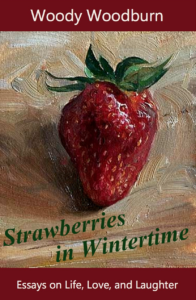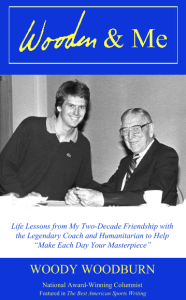 FOLLOW ME ON INSTAGRAM: @woodywoodburn
FOLLOW ME ON INSTAGRAM: @woodywoodburn
*
Apollo 11 Pitched
A “Perfect Game”
A number of years ago, a press-box sage shared with me a story about a New York newspaper hiring a famous novelist to cover the 1956 World Series between the Yankees and Brooklyn Dodgers.
All went well with the guest columns until Game 5 when the Yankees’ Don Larsen pitched the first – and still only – perfect game in the history of the Fall Classic. An hour after Larsen had jumped into the celebratory embrace of catcher Yogi Berra, the big-time author buried his face in his palms and muttered: “I can’t, I just can’t. It’s too big for me to write about.”
That famous October 8 date in baseball history comes to mind when I think of July 20, 1969 when Neil Armstrong leapt into history with one small step: “It’s too big for me to write about. I can’t.”
But I must try.

Neil Armstrong’s historic small step/giant leap on lunar surface.
The biggest stories are often best told in the smallest ways, macro being revealed in the micro, and so perhaps recalling NASA’s “perfect game” through the eyes of a 9-year-old boy has merit.
I was, of course, that young boy. Like nearly all American boys – girls, women and men, too – in the 1960s, I watched the Space Race unfold on television with Cape Canaveral launches and space walks and ocean splashdowns. Because of the Mercury, Gemini and Apollo programs, growing up to become an astronaut superseded being a fireman, cowboy or Major League baseball player as the No. 1 dream of most schoolboys.
Slumbering in dreamland is where I would have normally been when Neil Armstrong climbed out of the lunar module because on earth it was nearing 11 p.m. in Ohio, too late for 9-year-olds to be up even in summertime. But this was not a normal night. This was the night sci-fi writers like H.G. Wells and Jules Verne miraculously became authors of nonfiction.
Before camping in front of the television, I remember going outside and staring up at the moon with naked eyes and full imagination. My fantasy thoughts were in many ways more clear than the grainy, ghostly, black-and-white TV images to follow.
Fuzzy as the broadcast was, seeing Neil Armstrong hop down the spider-legged Eagle’s ladder, pause dramatically on the footpad, and then step onto the lunar surface remains as vivid in my mind a half-century later as when it happened “LIVE FROM THE MOON” (as the screen text declared) at 10:56 p.m. Eastern Time while I watched transfixed sitting on the floor six feet from a 25-inch TV screen.
My family had recently gotten its first color television, a Zenith console, and in all honesty “Bonanza” and “Star Trek”, both always popping with vibrant colors, paled to this historic moonwalk episode aired only in black and white.
“That’s one small step for (a) man,” Armstrong famously said, either forgetting the “a” or more likely it being swallowed by space static, “one giant leap for mankind.”
Another quote became nearly as famous, this one employed in myriad situations by the general public: “If we can put a man on the moon, why can’t we (fill in the blank)?” Fill in the blank could be anything from make a toaster that doesn’t burn toast to forging world peace.
Putting a man on the moon in 1969 seems all the more impossibly magnificent as we look back through the prism of time because it was accomplished with slide rules and early generation computers that filled massive rooms. Similar computing power now fits into the smartphones owned by most 9-year-old kids.
On today’s golden anniversary, Apollo 11’s “perfect game” seems bigger than ever.
* * *
FOLLOW ME ON INSTAGRAM: @woodywoodburn
Woody Woodburn writes a weekly column for The Ventura County Star and can be contacted at WoodyWriter@gmail.com. Follow him on Twitter and Instagram at woodywoodburn. His books are available at www.WoodyWoodburn.com.

 Check out my memoir WOODEN & ME: Life Lessons from My Two-Decade Friendship with the Legendary Coach and Humanitarian to Help “Make Each Day Your Masterpiece” and my essay collection “Strawberries in Wintertime: Essays on Life, Love, and Laughter” …
Check out my memoir WOODEN & ME: Life Lessons from My Two-Decade Friendship with the Legendary Coach and Humanitarian to Help “Make Each Day Your Masterpiece” and my essay collection “Strawberries in Wintertime: Essays on Life, Love, and Laughter” …
- Personalized signed copies are available at WoodyWoodburn.com
